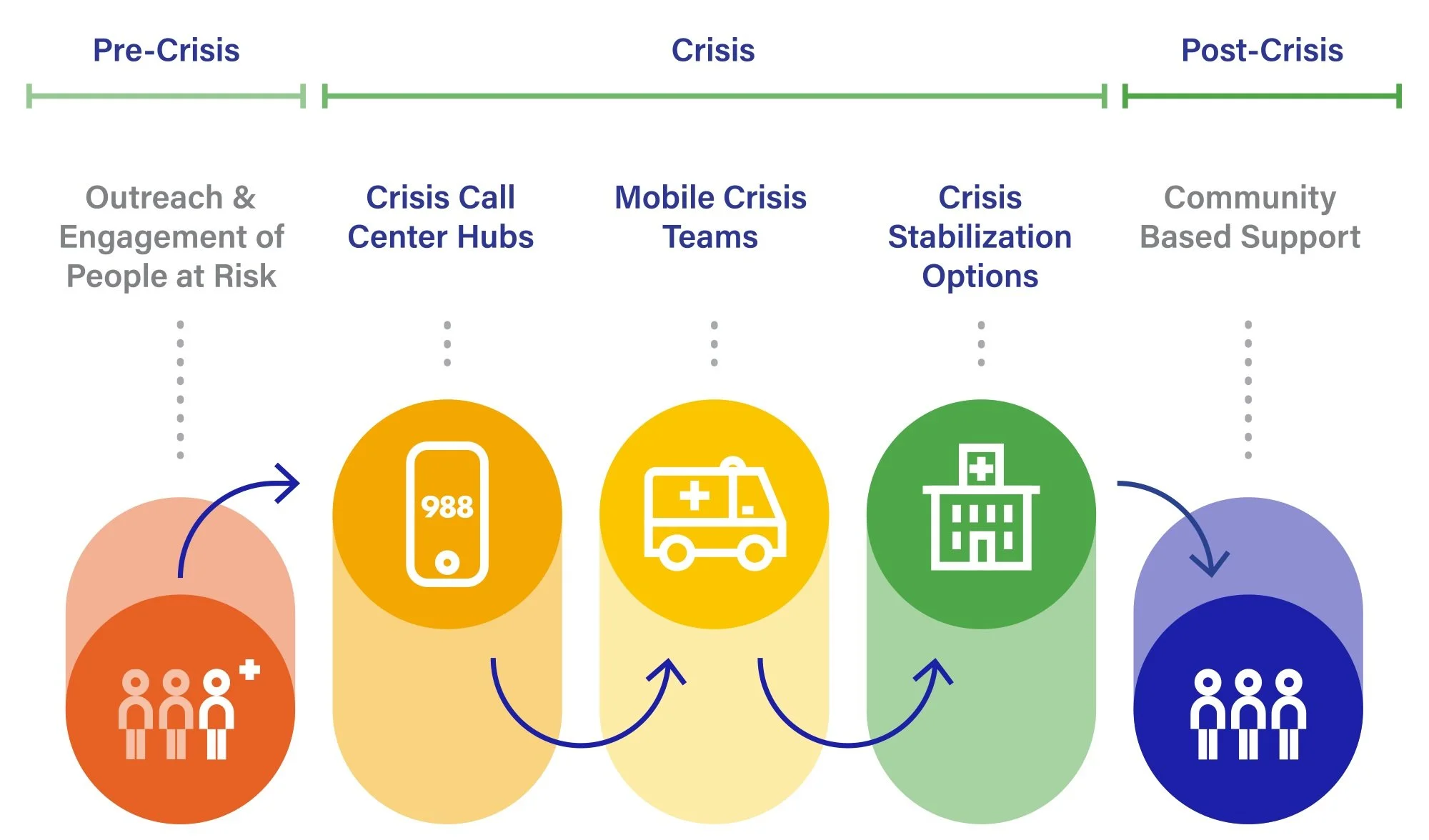Guiding Questions for Funders on 988 & Mental Health Crisis Reform
Mindful Philanthropy recently released our latest funder guide, A Call for Hope: How Philanthropy Can Support 988 and Mental Health Crisis Care. To accompany this guide, below are key questions to help you learn about how your community currently responds to mental health crises across the care continuum, as well as to help identify ways to engage locally.
Crisis response efforts will look different in different localities, so the first step is figuring out who is working on 988 and the crisis continuum in your local community or region of focus. In some areas, government agencies may be leading local efforts. In others, policy institutes and think tanks may be spearheading the cause. You can also start by learning who is operating local crisis call lines, crisis centers, and stabilization units. Or find out what other funders are supporting crisis reform efforts in your area to join their efforts.
Adapted from CEO Alliance for Mental Health (2021). Consensus approach & recommendations for the creation of a comprehensive crisis response system.
In Each Part of the Continuum
Once you identify local stakeholders involved in mental health crisis reform, you can use the following guiding questions to gather more information about the local crisis landscape and opportunities to engage. These questions are organized according to the crisis care continuum, from preventing crises in the first place, to effectively responding, to providing support after a crisis occurs.
Outreach and Engagement of People at Risk
What resources are available to prevent someone from a crisis in the first place?
How are high-risk populations identified and engaged?
Crisis Call Center Hubs (Someone to Call)
Now that 988 is live, who is answering those calls? Are they local people? How are they trained? Are they paid for their services, or do they volunteer?
Are mental health crises addressed over the phone in your community or region of focus? If so, how?
How are crisis calls approached differently from 911 calls?
What resources do local call center personnel have?
Mobile Crisis Teams (Someone to Come)
Who responds if a mental health crisis needs on site support? Who are the first individuals to arrive on scene during a mental health emergency?
Are police involved in the crisis response? If so, what mental health crisis training do they receive?
How could the current response be improved?
Crisis Stabilization Options (A Place to Go)
What options do people have for crisis stabilization?
Is there a crisis center in your town? Who operates it? How is it funded?
Community Based Support
How are people supported in the community after a crisis?
What are the different services available to people after a crisis? How can these services be bolstered and coordinated?
Across the Continuum
Do local crisis call and response structures meet the SAMHSA minimum standards? Do they follow best practices?
Are current crisis services culturally and linguistically responsive? Do communities of color know about and feel comfortable using existing crisis services? How can they be improved to increase accessibility, comfort, and trust in diverse communities?
How can the rollout of 988 be bolstered for other marginalized populations, such as LGBTQ+ communities, rural populations, and people who are deaf/hard of hearing?
What services are available for youth in crisis? Are text message options available locally? Are there preventative programs in place to prevent crises among youth, such as mental health education curricula in schools?
What happens between components of the crisis response system? How can partnerships and collaboration between components be ensured through warm handoffs?
Who else is funding or otherwise supporting elements of the crisis continuum in your community? How can you partner with them for greater impact?
How can you invest? Consider some ideas below:
Convene funders and other stakeholders to set a local agenda, share information, and take action collectively.
Adopt and adapt models that work effectively in other localities and states.
Fund evaluation, training, and capacity building to bolster local responses.
To learn more about how funders can support 988 implementation within a broader crisis response system, download Mindful Philanthropy’s latest guidance, A Call for Hope: How Philanthropy Can Support 988 and Mental Health Crisis Care. See our blog for more in this series on how funders can help reimagine the crisis system.

